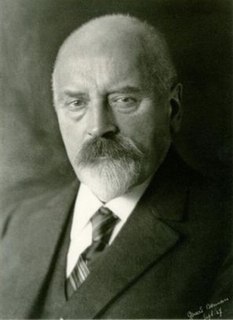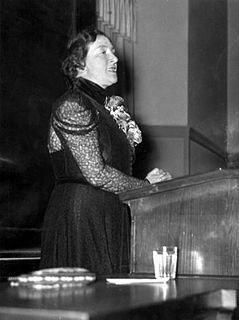
Veldhoven is a municipality and town on the Gender in the southern Netherlands, just southwest of Eindhoven.

Vriezenveen is a town in the municipality of Twenterand in the Dutch province of Overijssel. The population was 13,800 on January 1, 2020.
The Battle of Westbroek was a battle that occurred on 26 December 1481 between the armies of the prince-bishopric of Utrecht and the county of Holland. It was one of the last battles of the Hook and Cod wars.

Ochten is a village in the Dutch province of Gelderland. It is a part of the municipality of Neder-Betuwe, and lies about 10 km southwest of Wageningen.

The All Saints' Flood of 1170 (Allerheiligenvloed) was a catastrophic flood in the Netherlands that took place in 1170. Large parts of the Northern Netherlands, and Holland territories were overflowed.

The Free Belgian forces were soldiers from Belgium and its colonies who fought as part of the Allied armies during World War II, after the official Belgian surrender to Nazi Germany. It is distinct from the Belgian Resistance which existed in German-occupied Belgium.
Veldhoven en Meerveldhoven was a municipality in the Dutch province of North Brabant. It was located west of Eindhoven, and covered the village of Veldhoven and the former village Meerveldhoven.

Maasdam is a village in the Dutch province of South Holland. It is located about 14 km south of the city of Rotterdam, in the municipality of Hoeksche Waard, on the rural Hoeksche Waard island. From the 14th Century until around 1800, Maasdam was also the name of the local administrative area, the fief and later the "ambacht".

Heikant is a neighbourhood in the municipality of Veldhoven, in the Dutch province of North Brabant. With a population of over 6700 inhabitants, it is the largest neighbourhood in Veldhoven. Heikant contains a small shopping centre and a church. The Sint-Maartenchurch was built in 1990.

John of Nassau, German: Johann von Nassau, Dutch: Jan van Nassau was a clergyman from the House of Nassau. From 1267 to 1290 he was Bishop-Elect of the Bishopric of Utrecht as John I. He did not care much for his spiritual functions, and his government also failed due to his weak political and poor financial management. During his reign, the influence of the County of Holland in the Bishopric greatly increased. John's government was one of the worst the Bishopric had to endure; without talent and energy, slavishly surrendering to all sensual pleasures, it was never possible for him to maintain the inner peace, under which the Nedersticht in particular suffered greatly.

Schoot is a hamlet in the municipality of Veldhoven in the province of North Brabant, the Netherlands. The hamlet is located on a street with the same name. This street is a side street of the Knegselseweg, the road connecting Veldhoven with the village Knegsel. East of Schoot lies the residential area Pegbroeken. West of Schoot flows the small stream the Poelenloop and lies the forest area Oeyenbos.
Zittard is a hamlet in the municipality of Veldhoven in the province of North Brabant, the Netherlands. The hamlet is located on a road with the same name and consists mostly of farms. As of 2008, Zittard has a population of 160 people.

Zandoerle, in local tongue known as Zandoers, is a hamlet in the municipality of Veldhoven in the province of North Brabant, the Netherlands. The hamlet has a population of 120 people, as measured on the first of January 2008. The hamlet is located between the villages Oerle and Knegsel. Zandoerle can be seen as one of the two centres within the village of Oerle. The other centre is often referred to as Kerkoerle . Zandoerle has great cultural and historical value due to its characteristic village green and monumental farms.

Halfmijl is a hamlet in the west of the municipality of Veldhoven in the province of North Brabant, the Netherlands. The hamlet is located two kilometers east of the village Vessem and consists of eight houses, most of which are farms.

Simon Berman was the mayor of Kwadijk, Middelie, Warder, Schagen, Bedum, and Alblasserdam in the Netherlands. He was the first mayor of Kwadijk, Middelie, and Warder to actually live in one of those villages. As a popular mayor of Schagen, he handled a double murder case that drew national media attention and advanced a professional school and regional light rail and canals. In Alblasserdam, he addressed the local impacts of World War I. Berman is also known for his association with Christian anarchism.

Adriaan Kluit was a Dutch scholar, important in Dutch linguistics. He was born in Dordrecht. He was rector of the Latin school in Alkmaar and Middelburg. In 1779 he became the professor of history at the University of Leiden, remaining there until his death.
The Battle of Kollum was a military engagement that took place on 16 July 1581 during the Eighty Years' War and the Anglo–Spanish War. The battle was fought between an English and Dutch force under John Norreys and Diederik Sonoy respectively, and a Spanish force under George van Lalaing, the Count of Rennenberg. The Dutch and English were victorious, and as a result of the defeat Rennenberg, already ill, died two days later.

Johanna van Ammers-Küller was a Dutch writer. She was one of the most successful European female writers in the interwar period, though her reputation suffered as a result of her collaboration during World War II.
Petrus Josephus"Peter"van Kessel is a Dutch historian. He spent his career at the Royal Netherlands Institute in Rome, ultimately becoming vice director.
















